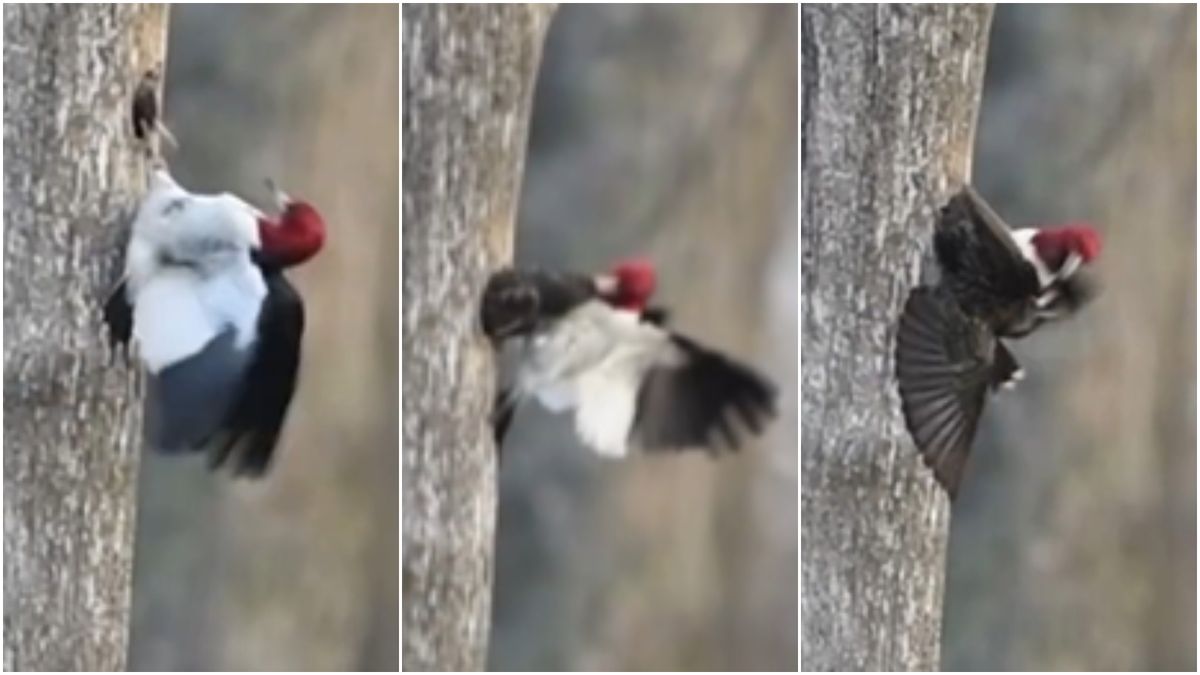Remarkable footage captures the moment a red-headed woodpecker evicts a starling squatting in its nest by yanking it out of a tree trunk.
Woodpeckers and starlings are cavity nesters, meaning they hollow out nesting holes rather than building them from scratch, but starlings often invade other birds’ nests and harass their owners.
When Emily Tornga first spotted the red-headed woodpecker (Melanerpes erythrocephalus), she didn’t realize it was dealing with an unwanted tenant.
“I thought I was watching the woodpecker clear out a nest hole, but then, much to my surprise, the starling emerged and the fight you see in the video began,” Tornga, who co-founded the Sparrow Appreciation Society, told Live Science in an email. “I have never seen anything like this before with this colony of red-headed woodpeckers.” Tornga filmed the encounter and posted it on Instagram.
Related: Watch thousands of starlings perform an ‘incredible ballet of life and death’ in new murmuration footage
Common starlings (Sturnus vulgaris), also known as European starlings, are an invasive species in North America and were first released in New York City’s Central Park in 1890 by Shakespeare enthusiasts who wanted to introduce all the bird species mentioned in the playwright’s work to America.
Starlings don’t shy away from attacking and killing native birds and their babies once they have set their sights on a nest.
“Starlings are a huge problem for red-headed woodpeckers,” Tornga said. “Happy to say the starling moved on after this encounter.”
Following the fight, the woodpecker flew to the top of its tree and sat for a moment, Tornga said.
Red-headed woodpeckers are fierce defenders of their territory and quick to pick fights with other birds, including brazen starlings. Despite this, red-headed woodpeckers suffered a 54% decline in population between 1966 and 2019, according to the North American Breeding Bird Survey.
One of the primary drivers of this decline is the limited number of suitable trees left to hollow out nests from, as these trees are being felled. “They nest in dead or dying trees in mature stands of forest,” Tornga said. “Due to land development, these habitats are becoming harder and harder to come by.”


